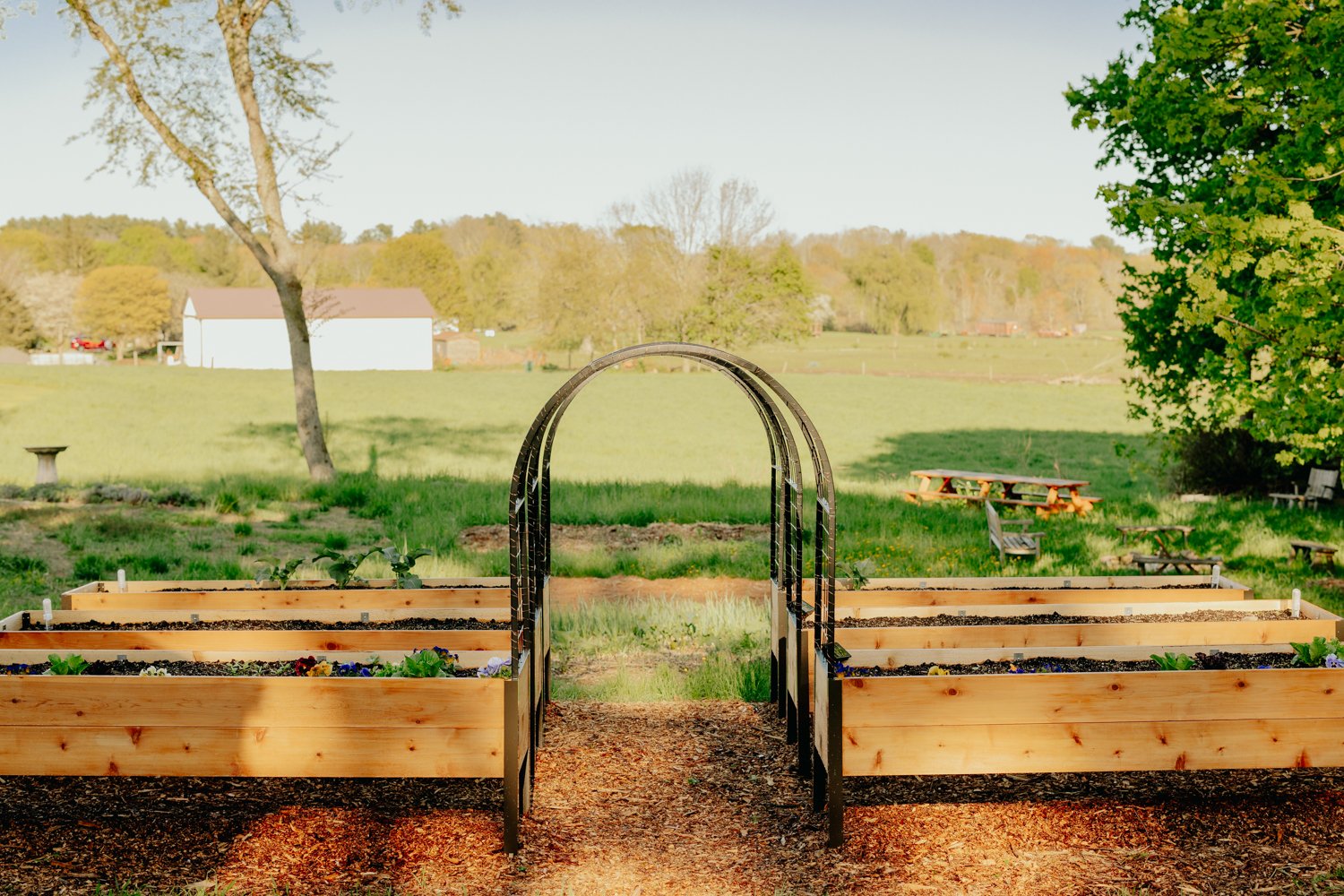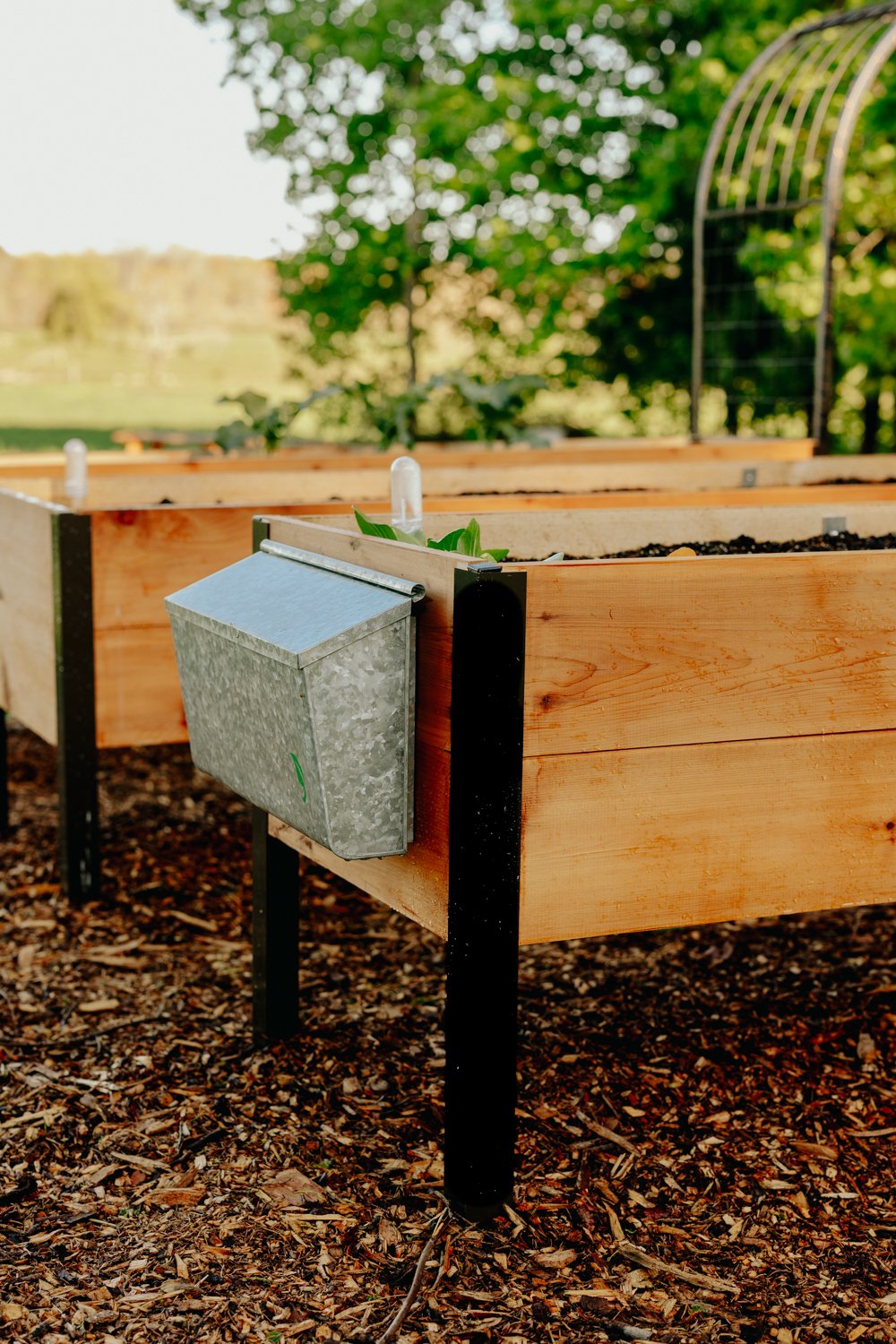Why You Need Gardener's Supply Co.'s Raised Beds for Your Garden [Review]
The Cottage Peach is reader-supported. When you purchase through links on our site, we may earn an affiliate commission at no additional cost to you. All opinions are our own.
Gardening with chronic illness
I’ve been gardening for most of my life in one form or another, but around ten years ago I was diagnosed with psoriatic arthritis, and since then I’ve had a whole decade to come up with the best gardening hacks to and gardening tools for gardening with chronic pain and low energy.
Psoriatic arthritis often confuses people who don’t have it - its cousins rheumatoid and osteoarthritis are far more common, so there’s a misconception that psoriatic arthritis isn’t as serious or doesn’t have as much of an impact on quality of life as these more well known forms of arthritis. The fact is that psoriatic arthritis is more than a skin condition. I experience severe joint pain and fatigue, just like someone with rheumatoid arthritis or osteoarthritis. I just get the added “bonus” of sensitive dry skin too. While exercise can help with my symptoms, it can also make them worse if I push myself too hard. I’ve had to learn my physical limitations by testing them, and they are a lot lower than someone living without an autoimmune disease. The idea that arthritis is an “old person's” condition is so pervasive that people often think it can’t really be that bad, especially since I don’t look sick and I’m not old. But invisible illnesses like arthritis and other autoimmune conditions can dramatically change your life, no matter your age or outward appearance.
I’ve hit breaking points with my arthritis while gardening many times. I have sat, covered in dirt and crying because I couldn’t bend over or kneel to clear weeds from an in-ground garden bed. I thought the solution was to just scoot along on my butt, but quickly discovered that even though this was easier on my joints it was still physically exhausting and left me too fatigued to finish. I have lost the hand strength to grip a shovel or rake on more than one occasion. I have felt scared that someday even the little things I do could be beyond my ability if I’m not careful. Gardening is rooted in my soul, a part of my identity, and I don’t know what I’d do without it at this point. Gardening and nature in general have brought me out of the darkest moments in my life. Tending to plants gives me purpose and fulfills my need to nurture.
This is the reason I sit here day after day and type these words to you: I grew from these challenges, and I want to show you how you can too. Now these hard times that I faced are just more proof that I know I can trust myself to stand up for my needs and prioritize them. They solidified my identity and brought me closer to knowing myself. Most of this came from mindset (we are hard-wired to see the negative first, but that can be overcome) but after that mindset shift, in order to make real concrete change I invested in gardening tools that would make it possible for me to continue doing what I love. The biggest change I made in the garden to support my body came in the form of 6 new elevated garden beds from Gardener’s Supply Company.
No-Bend, Self-Watering Elevated Planter Box
These no-bend garden boxes keep plants hydrated via a series of innovative, connected reservoirs that deliver water to roots on demand. Four generous 5-gallon reservoirs extend the time between waterings and create more even moisture throughout the bed. And, since water is drawn primarily from the bottom instead of applied from the top, less water is lost to evaporation too! 10" planting depth accommodates a wide variety of crops, from tomatoes to root-crops like carrots.
The height of the planter box has other advantages too: fewer weeds, reduced maintenance, and fewer critters nibbling at your prize plants. The sturdy aluminum legs won't buckle or sag, and the wood is naturally rot-resistant and safe for your organic crops. Best of all, it allows me to garden at table-height, eliminating the bending and kneeling that makes gardening difficult on my joints.
They are made of durable cedar wood with metal legs, and I like that the natural materials blend in seamlessly with the environment.
Benefits of raised beds
Able to grow a large variety of fruits and vegetables
Less weeds
Easier to maintain
Control of soil quality and composition
Reduces pests
Depending on the size, raised beds can be a disadvantage for growing larger crops. They aren’t well suited for growing things like corn or potatoes for example. But you’d be surprised how large a plant you can fit - for example, I am growing squash plants along the edges of my beds and trailing them down the side of the planter box.
The best materials for raised beds
Raised beds can be made from many different materials, including metal, wood and plastic. Many people do not want to grow in plastic containers due to concerns of chemicals leaching into the soil (although it’s unlikely that your plants would absorb enough of these chemicals to actually make it into your food). Metal containers can be durable if well constructed, but can be susceptible to rust and don’t always fit into the natural look of your garden since they can be a bit industrial. Wood is a natural and renewable material, and made out of rot-resistant trees such as cedar or cypress such as these beds they will last you a very long time and can even be treated to extend their lifespan. Wood garden beds will blend right into the natural surroundings.
How to build raised beds
Assembling the elevated garden beds from Gardener’s is a little involved, but you don’t need to be a construction expert or have any fancy tools to put them together. I was able to build a single bed in about an hour, and each one after that went a little bit faster. The instructions spell everything out step by step, and with a little patience you’ll have your beds assembled in no time! I do recommend having a second person to help you, since the beds are fairly large and need to be turned on their side for some steps of assembly. We organized all the pieces on the lawn near where the beds would be placed, then worked through each section step by step. You build the exterior of the box first and then each of the four self watering trays sits on top of the metal rail inside. Because these are elevated off of the ground, they are technically container gardens - it’s important to account for the fact that you will need potting soil (made with no actual dirt), not garden soil to fill these beds to provide proper drainage and weight requirements. I filled mine with Coast of Maine’s Bar Harbor Blend Organic Potting Soil (more to come on why I chose this amazing company)
How to maintain raised beds
These raised beds are made from durable and high quality cedar, which will last a long time. You can extend their life even further by sealing the beds. Use a food safe sealer, especially on the interior of the beds, like this one recommended by Gardener’s Supply. The exterior is stained using a finish similar to this one from Gardener’s in “Lakeside Cedar”. With this simple step done, you’re ready to fill your beds and plant.
Since we have harsh winters, I will probably use a firewood cover to protect them when not in use. This firewood cover hack should work for many different raised bed shapes and sizes!
My Honest Review of the Gardener’s Supply Co. Elevated Planter Boxes
These elevated garden beds from Gardener’s are well constructed, and built to last. I strongly recommend them, especially if you garden with chronic pain like I do. The design is really beautiful and fits in nicely with the natural landscape. I really like the contrast of the black metal legs with the warm wood tones. Best of all, they empower me to do what I love - garden! - without pain from bending and kneeling, and eliminate garden tasks like weeding that drain my limited energy.
Constructing the beds was probably the only area that I can see being a downside for some. It’s not complicated, but it is time consuming and requires that you have a helping hand in order for things to go smoothly. Building boxes and keeping everything square and level can be deceptively challenging, and we encountered a few areas where I wish we had thought to build ours on a flat level surface such as a driveway in order to help everything line up correctly.
I think we will have these garden beds for a long time to come. They are rock solid and make the space feel so much more intentional and cohesive. My garden truly feels like a sanctuary now that I am always finding myself drawn to spending time in.
Toolbox
This galvanized toolbox was such a pleasant surprise. I’m always forgetting my tools - either leaving them in the house which means trips back and forth that drain my limited energy, or leaving them outside to get ruined in the rain! With this box that problem is totally eliminated, and the metal stays pretty cool to the touch too.
Self-watering reservoir
You can get these elevated garden beds without the self-watering insert, but keep in mind that any bed lifted off of the ground is going to dry out much faster than an in-ground garden bed. Without a self-watering reservoir you may need to water every single day. These reservoirs are designed specifically for elevated garden beds and planter boxes, with a 5-gallon reservoir that reduces time between waterings & spreads moisture more evenly for healthier plants. It reduces the need for daily watering, creates more even moisture throughout the bed, and promotes deeper water absorption as roots reach the reservoir. And since you'll mostly be watering from the bottom instead of the top, less water will be lost to evaporation. When combined with additional inserts, it can elevate almost any size elevated raised bed into a self-watering one. These inserts are made from durable, thick plastic (food grade of course) and installation couldn’t have been simpler. The trays simply rest on the metal rail on the inside of the beds and are connected with flexible tubing. The water level indicator leaves nothing to chance, so I always know when it’s time to add more water. I’ve also noticed they serve double-duty as a rainwater collection system, since they fill naturally during heavy rain storms.
What I’m growing in my raised beds
Since these raised garden beds are a generous 10” deep, I am able to grow everything that I would normally grow in my in-ground garden in these beds. Here’s the list of everything I’ll be growing in these raised beds this year:
BASIL
BELL PEPPERS
BROCCOLI
BRUSSEL SPROUTS
CARROTS
CHERRY TOMATOES
CHIVES
CUCAMELON
CUCUMBERS
EGGPLANT
FORGET-ME-NOTS
GREEN BEANS
KALE
LETTUCE
Birdhouse Gourd
PANSIES
PARSLEY
RADISH
SNAP PEAS
SPINACH
SQUASH (SUMMER, BUTTERNUT, ACORN)
STRAWBERRIES
SWISS CHARD
VIOLAS







